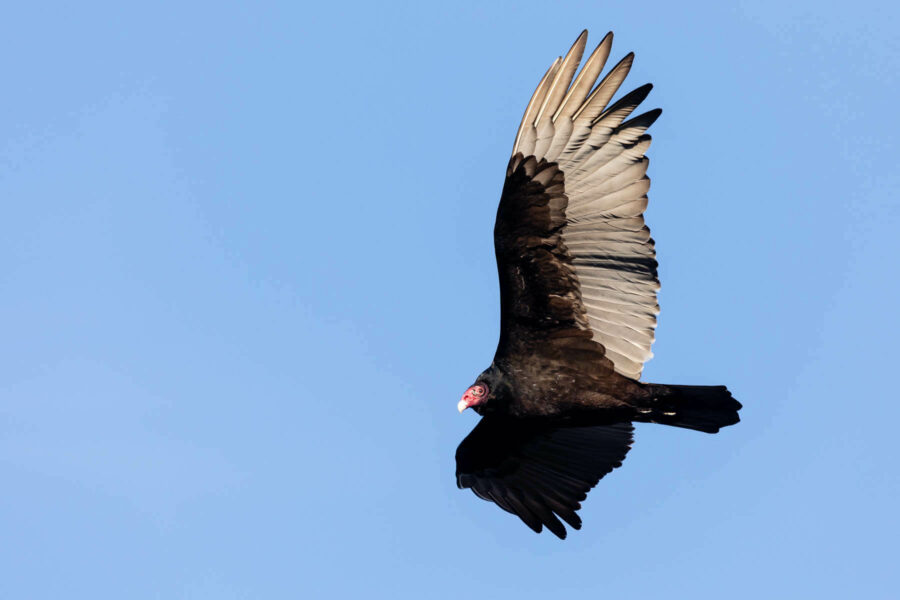Guardians of the road

Every childhood road trip from Washington, D.C. to Cooperstown, New York was filled with the same routine. By the time we reached the upper reaches of the watershed, my mom would feign excitement as I exclaimed, “Look mom, a turkey vulture!” for the fortieth time that day. Somehow the large dark bird that survives by eating rotting meat wasn’t as exciting for her as it was for me. But the young naturalist in me thought they were awe-inspiring guardians of the road.
Turkey vultures are commonly spotted above roads in more rural areas as they ride thermal currents and use their powerful sense of smell to search for food. Even from a distance the frame of a turkey vulture is recognizable. Their large dark bodies form into the shape of a “V” with the very ends of their wings sticking up at a steeper angle than the rest of their body. As the bird wobbles in the wind, observers can see the white or silver colored stripe that runs the five-foot length of their underwings.
Turkey vultures can often be mistake for black vultures, a lesser known but similar looking vulture also found in the Chesapeake region. Both birds are featherless on their heads but black vultures have a black head instead of a red head. While turkey vultures have white coloring that spans the entire wing, black vultures have just a small patch of white at the end of their wings. Black vultures also differ in behavior. They tend to find food by sense of sight rather than sense of smell and are believed to fly above turkey vultures and follow them to food. A single turkey vulture can usually fend off a single black vulture due to their size, but black vultures have stronger family structures and will often fly together and overwhelm turkey vultures.
Both species of vultures serve an important role as scavengers—animals that feed on already dead or dying organisms. When critters like deer die on the side of the road or at the edge of a forest, bacteria starts to grow in the decaying flesh. Other animals that approach the carcass can get sick and spread disease. Vultures, however, have stomach acids and enzymes that are capable of killing harmful diseases and bacteria. Without vultures, other scavengers like rats, which are known for spreading disease, will move in.
Around the world, over half of the 23 species of vultures are listed as endangered or threatened. Thankfully, the population of vultures in the Chesapeake Bay watershed is currently stable. Increasing wildlife habitat, avoiding the use of rat poisoning and being aware of harmful hunting practices are all important steps to keeping our guardians of the road safe.

Comments
There are no comments.
Thank you!
Your comment has been received. Before it can be published, the comment will be reviewed by our team to ensure it adheres with our rules of engagement.
Back to recent stories